seaweed Cozumel
Sargassum on Beaches in Cozumel
Information on this important yet stinky natural phenomenon…..
Some of Cozumel’s beaches are experiencing the phenomenon of a Sargassum seaweed deposit. Although it might smell less than pleasant, it’s not environmentally harmful, and fact, this natural occurance has quite a variety of benefits.
Sargassum can grow in deep water open oceans to create “floating islands” that have been chartered as several acres wide and up to 2 meters in depth! While it’s not unusual for sargassum to wash ashore on Cozumel, it can appear unsightly, and frankly it has an off-putting odor, however thankfully the amount that has arrived this season has been of an average amount, unlike last year’s record breaking deposits.
It’s been speculated by scientists that this particular bout originated off the coast of South America and then was pushed toward our area by strong ocean currents. Some even speculate that sargassum, with it’s asexual reproduction, could be considered the largest organism world-wide. When a part of a sargassum island drifts off it continues to reproduce until it becomes less buoyant, too weighty or ends up on a beach in Quintana Roo Mexico.
Sargassum, which derives its name from the Sargasso sea where it originated, may look bad, and even smell bad, the brown algae, does offer a surprising number of benefits. Also known as Gulfweed, is free-floating ecosystem that provides shelter, and a home for many forms of marine life. It’s considered to be a nursery for several types of fish, including Mahi Mahi.
Sargarssum been shown to prevent sand erosion and preserve beaches.Left on it’s own, sargassum breaks down in a 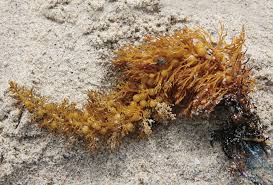 very short time, grinds up, and becomes incorporated into the sand. It also has a very high nutrient content and can be used as a natural fertilizer.
very short time, grinds up, and becomes incorporated into the sand. It also has a very high nutrient content and can be used as a natural fertilizer.
Sargassum is also completely edible. It’s slightly bitter flavor doesn’t make it nearly desirable as the more popular northern Pacific and Atlantic seaweed varieties. Eat the Weeds offers some helpful information on cooking and eating the pungent sea vegetable.
Called Hai Zao in traditional Chinese Medicine, ground dried sargassum, and was a mainstay in the treatment of goiters, dropsies of all kinds and even menstrual disorders.
Visitors to the island might not even notice an increase in the seaweed on our island’s beaches, however, sargassum can play an important role in the ecological system, as both an erosion deterrent, or even perhaps a food source.
Sargazo en las playas de Cozumel
Información acerca de este importante fenómeno, a pesar de ser hediondo. . . .
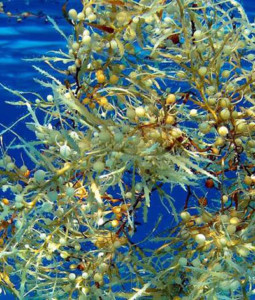 Algunas de las playas de Cozumel están pasando por el fenómeno de depósito de sargazo. A pesar de que su olor es menos que agradable, no daña al medio ambiente y, de hecho, es un fenómeno que tiene una amplia variedad de beneficios.
Algunas de las playas de Cozumel están pasando por el fenómeno de depósito de sargazo. A pesar de que su olor es menos que agradable, no daña al medio ambiente y, de hecho, es un fenómeno que tiene una amplia variedad de beneficios.
El sargazo puede desarrollarse en mar abierto creando “islas flotantes”, ¡que han llegado a medir varias hectáreas de ancho y hasta 2 metros de profundidad! A pesar de no ser extraño que el sargazo llegue a las playas de Cozumel, puede parecer desagradable y, francamente, expide un olor fétido; sin embargo, la cantidad en esta temporada ha sido promedio, a diferencia de los depósitos sin precedentes del año anterior.
Los científicos han especulado que este brote se originó en las costas de Sudamérica y fuertes corrientes marinas lo empujaron hacia nuestra zona. Algunos incluso han llegado a especular que el sargazo, con su reproducción asexual, podría considerarse el organismo más grande a nivel mundial. Cuando una parte de la isla hecha de sargazo queda a la deriva, continúa reproduciéndose hasta tiene menos flotabilidad, con mucho peso o termina en una playa en Quintana Roo, México.
A pesar de tener apariencia y olor desagradables el alga color café del sargazo, cuyo nombre deriva del Mar de los Sargazos donde se originó, ofrece una sorprendente cantidad de beneficios. Este ecosistema flotante brinda abrigo y es el hogar de múltiples formas de vida marina. Se considera criadero de diversas especies de peces incluyendo el dorado.
El sargazo ha mostrado que previene la erosión de la arena y que conserva las playas. Al dejarle solo, el sargazo se 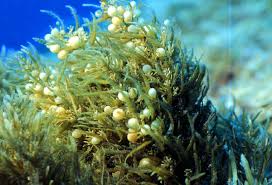 descompone en muy corto tiempo, se tritura e integra a la arena. También tiene un elevado contenido de nutrientes y puede usarse como fertilizante natural.
descompone en muy corto tiempo, se tritura e integra a la arena. También tiene un elevado contenido de nutrientes y puede usarse como fertilizante natural.
El sargazo es totalmente comestible. Su sabor ligeramente amaro no le hace tan deseable como las otras variedades de sargazo del norte tanto del Pacífico como del Atlántico. Eat the Weeds ofrece información útil para cocinar y comer este vegetal marino de sabor agrio.
En la medicina tradicional china el sargazo seco y molido es conocido como “Hai Zao” y fue un elemento fundamental para el tratamiento del bocio, hidropesías de toda clase e incluso trastornos menstruales.
Es posible que quienes visitan nuestra Isla ni siquiera se percaten del aumento del sargazo en las playas de la Isla; sin embargo, el sargazo puede jugar un papel importante en el sistema ecológico como elemento para disuadir la erosión o incluso hasta como fuente alimenticia.
______________________________
Una ex yanqui de Connecticut quien llama hogar a Cozumel desde hace más de 15 años. Laura escapó al Caribe hace años, desplazándose de una isla a otra dando clases de BUCEO. Se dedicó a perder el tiempo en Jamaica y finalmente se detuvo en Cozumel para pasar unas vacaciones de 2 semanas que aún no terminan. Convenciendo a sus padres que pagaran una elegante universidad privada, obtuvo su título en Periodismo y Laura crea semanalmente Cozumel 4You, medios sociales y artículos promocionales sobre la Isla y también es moderadora en el grupo Cozumel 4 You en Facebook que actualmente cuenta con 25,000 miembros. Fabián, s umuy tolerante marido, desde hace mucho tiempo se resignó a no tener vida privada, pues se ha visto implicado en los diversos proyectos y planes que urde Laura. Son orgullosos padres de diversos perros y gatos rescatados. Mientras contempla su paso a través de la vida en el Caribe mexicano,Laura continúa siendo la pesadilla en la existencia de su muy tradicional suegra mexicana.
- 2025 Turtle Season - April 18, 2025
- Cozumel News April - April 18, 2025
- mayan crossing May - April 12, 2025
An ex-Connecticut Yankee who has called Cozumel home for over 18 years, Laura ran away to the Caribbean years ago, bumped around the islands teaching SCUBA diving, lost some time in Jamaica, and finally stopped in Cozumel for a 2 week vacation that hasn’t ended yet. With a degree in Journalism from a fancy private college she convinced her parents to pay for, Laura writes, edits, and creates the weekly Cozumel 4 You news, social media, and promotional articles about the island, as well as moderates the Cozumel 4 You Facebook group, which currently has over 25,000 members. Her long suffering husband, Fabian, has long since resigned himself to having zero private life, as he’s been involved in her various schemes and plots since his arrival. Proud parents to a variety of rescue dogs and cats, Laura continues to be the bane of her traditional Mexican mother-in-law’s existence, as she muses her way through life in the Mexican Caribbean. ______________________________ Una ex yanqui de Connecticut quien llama hogar a Cozumel desde hace más de 15 años. Laura escapó al Caribe hace años, desplazándose de una isla a otra dando clases de BUCEO. Se dedicó a perder el tiempo en Jamaica y finalmente se detuvo en Cozumel para pasar unas vacaciones de 2 semanas que aún no terminan. Convenciendo a sus padres que pagaran una elegante universidad privada, obtuvo su título en Periodismo y Laura crea semanalmente Cozumel 4You, medios sociales y artículos promocionales sobre la Isla y también es moderadora en el grupo Cozumel 4 You en Facebook que actualmente cuenta con 25,000 miembros. Fabián, s umuy tolerante marido, desde hace mucho tiempo se resignó a no tener vida privada, pues se ha visto implicado en los diversos proyectos y planes que urde Laura. Son orgullosos padres de diversos perros y gatos rescatados. Mientras contempla su paso a través de la vida en el Caribe mexicano, Laura continúa siendo la pesadilla en la existencia de su muy tradicional suegra mexicana.
1 Comment
Leave a Reply Cancel reply
2025 Turtle Season
2025 Turtle Season 2025 Cozumel Turtle Egg Season Kicks off With the...
“Cozumel Vivo” Marine Conservation
“Cozumel Vivo” Marine Conservation The “Cozumel Vivo” Project Unites Science and Community...
Cozumel Sargassum Seaweed
Cozumel Sargassum Seaweed Spring is Here & so is Sargassum The sargassum...
Cozumel Property Tax & Garbage Taxes
Cozumel Property Tax & Garbage Taxes Property Tax & Garbage Collection Fines...


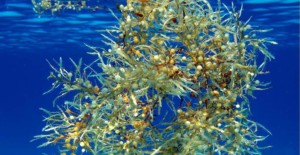






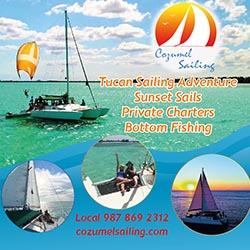

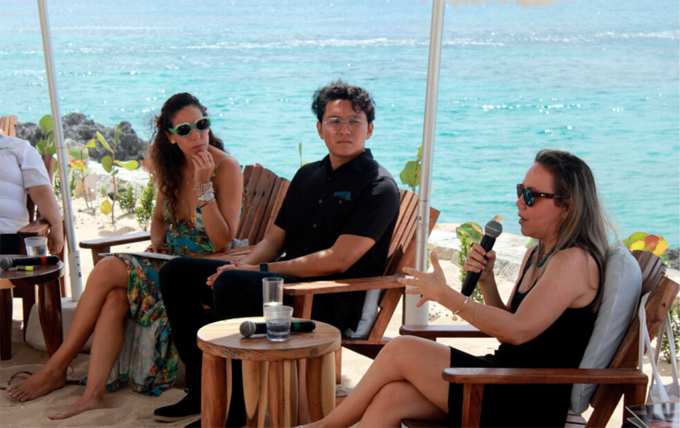
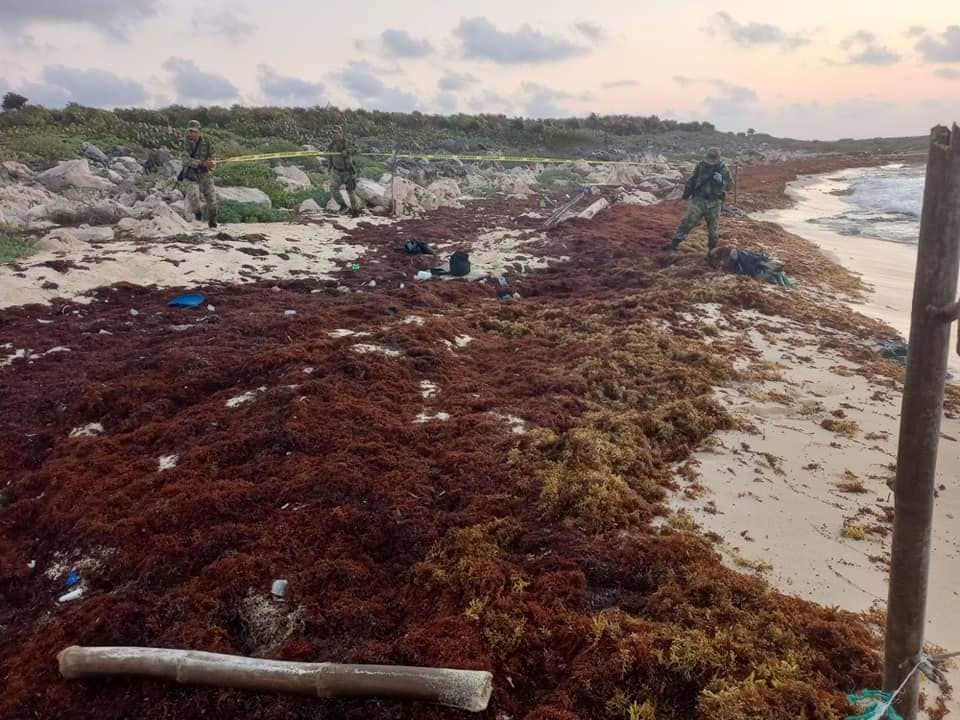
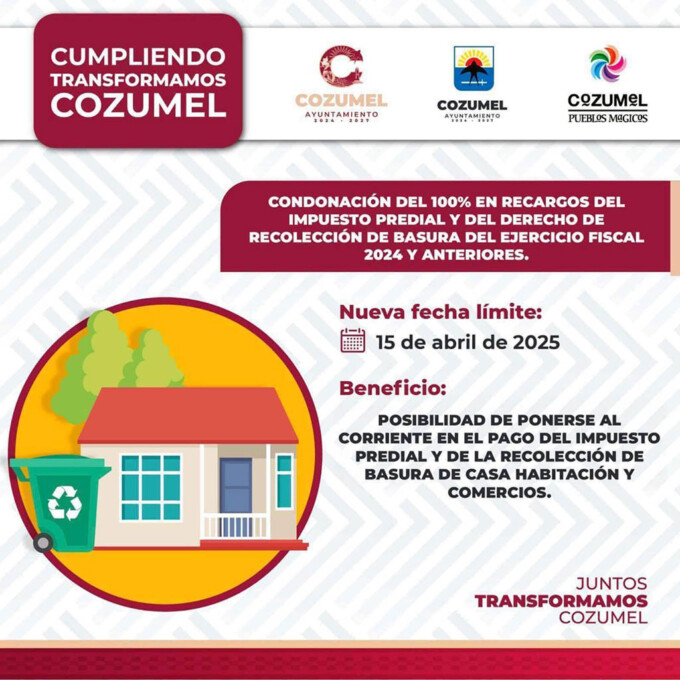




Hi
Given the sargasso problem on the mainland and also observed on Cozumel w coast does anyone know if there has been any science dine on how or if the seaweed problem will or is affecting reefs here?
Im particularly concerned that if problem continues fir severla years or vecones. Permenant fixture that it could significantly deter tourists and divers, why come here ‘ costa maya’ in general if beaches from cancun to tulum are unswimable ?
MY QUESTIONS ARR BUISNESS RELATED RE INVESTING IN TOURISM IN THE REGION, specifically in Coz’ :
Any long term predictions?
Is it thought to be a temporary issue?
Has it progressively got worse over recent years, or could it?
What is the best scientific guess on these matters?
Where can i find this/ more info?
Has it / Will it result in a drop off off in tourism no.s?
These questions and their answers are a crucial part iof some business research relating to long term investment plans, so anyone who is also/ or condidering to be an investor in the region’s tourism is welcomed to respond.
Has it caused a drop iff in real estate purchases or created significant complaints / even law suits from property buyers who belueve they wernt correctly informed of the issue?
I welcome all responses